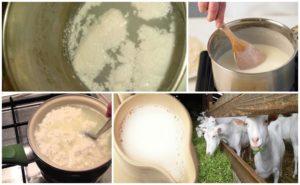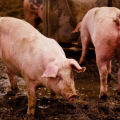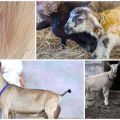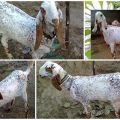Treatment of lice in goats with drugs and folk remedies at home
Goats are considered to be very unpretentious animals that do not require specific care. However, they sometimes experience increased anxiety and itch. This may be due to lice in goats. In this case, dermatitis develops, which are accompanied by scratching and hair loss. To cope with such violations, you must contact your veterinarian in a timely manner.
The harmfulness of ectoparasites
Lice or fleas can cause serious discomfort in goats. Unpleasant signs of problems include the following:
- the appearance of itching, dermatitis, scratching;
- loss of hair;
- anemia - in advanced cases, lice drink a lot of blood, which causes problems;
- increased risk of spreading other pathologies - bacterial, helminthic, viral or protozoal;
- risk to humans - such pests cannot live long on humans, but they often spread contagia.
Insects are most dangerous when they interact with other parasites. These include midges, flies, worms. Also, the situation is aggravated by ticks and protozoa.
Ways and causes of infection
Parasites are unstable to external factors. Outside the animal, they quickly die. The duration of the cycle from egg to mature individual is 1 month. With free grazing, the disease practically does not spread. Moreover, in close contact, parasites quickly move between animals.
During the summer months, the number of lice decreases as they die in the sun. This is due to the fact that parasites cannot withstand exposure to temperatures exceeding +44 degrees. At the same time, the surface of the skin in sunny weather heats up much more. Lice actively spread in winter when goats are crowded.
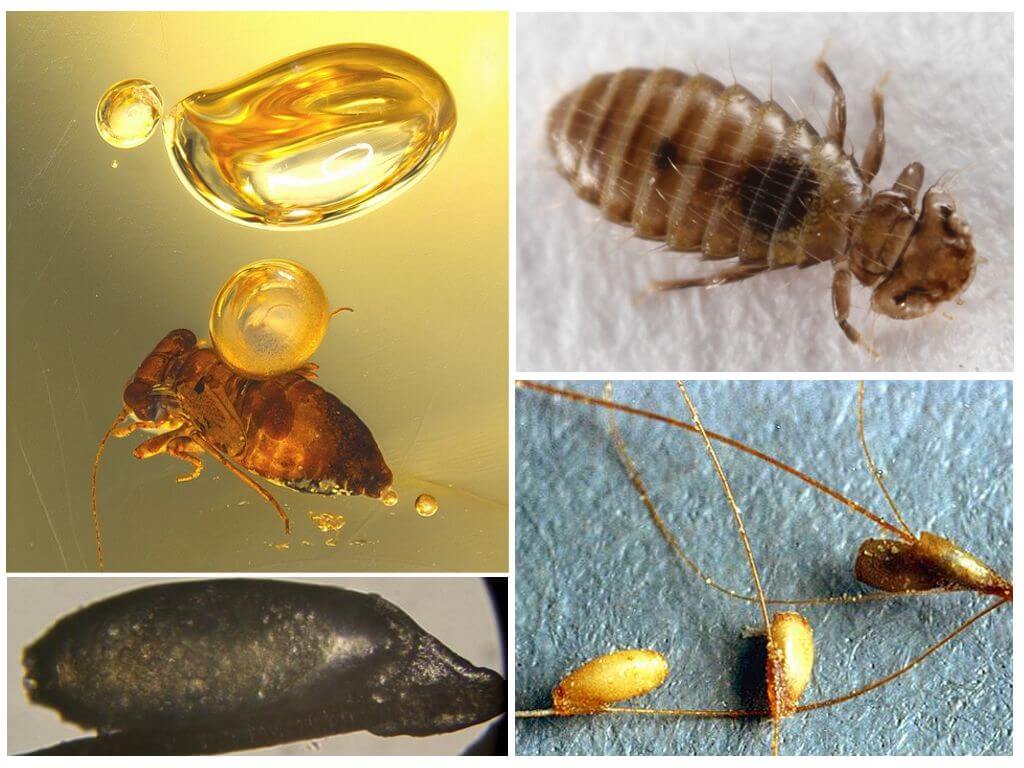
Symptoms of defeat
Lice irritate skin receptors as they invade the surface of the dermis with the mouth and paws. As a result, the goats are actively itching. Chewing lice are the most dangerous for animals. Their jaws are highly damaging to the skin. In addition, parasites are actively moving, which provokes an increase in itching.
In this case, lice usually do not provoke severe blood loss. Anemia can develop only with advanced invasion. The danger of parasites increases with associated damage. At the same time, other parasites are additionally detected in goats. These include external pests - ticks and fleas, as well as internal - protozoa and helminths.
Also, skin lesions provoke local inflammation.Sometimes there is a risk of pathogenic microflora getting on it. This aggravates the course of the disease and significantly increases the pathogenicity.
The most common parasites found in goats are:
- lice;
- dicrocelia are pulmonary worms;
- eimeria - are parasitic protozoa in the digestive organs;
- Trichocephalics are small intestinal worms that lay eggs in the groin;
- ixodid ticks;
- piroplasmas - are blood-parasitic unicellular organisms;
- temporary parasites - these include flies, mosquitoes, midges.

Lice infestation in goats changes the nature of the dermis. In the affected areas - on the head, neck, under the chest - the stratum corneum thickens. Moreover, it differs significantly in thickness from the adjacent zones. Histological examination reveals an accumulation of lymphoid cells. There is also swelling of the blood vessels. Crusts and an excess of dead cells are present in the affected areas. With constant damage to the skin by the proboscis of parasites, acute inflammation develops, which leads to compensatory reactions - a thickening of the stratum corneum.
Affected goats become restless. They may try to scratch on objects and bite the itchy areas with their teeth. In the area of lice localization, hair loss is observed, scratches and dermis lesions are formed. If the integument is damaged, the release of exudate, blood and lymph is observed. This provokes clumping of the coat, which is especially noticeable in long-haired pets.
How to cure lice from a goat
To remove lice, you need to take timely measures. In order to control parasites, it is recommended to treat goats with insecticidal preparations. It is important to take into account that they are effective against adults and some larvae, but do not affect eggs.
With repeated use of the same remedy, lice become immune to it. Therefore, in most cases, processing must be done several times. Typically, these drugs are used at intervals of 7-14 days. Group processing is considered the least time consuming. However, it is not always possible to carry it out. This is due to the following factors:
- large livestock required;
- a purchase trench is needed;
- goats can only be processed in the summer, while lice are usually activated in winter;
- requires a lot of insecticide.
Therefore, at home, aerosol treatment with special preparations is usually used. For small livestock, individual processing is performed. This helps to avoid spreading the infestation. Injections are often used.
The following substances are usually used to combat parasites:
- FOS - have a short-term effect. Such substances help to cope with parasites on goats and indoors. They are toxic to humans and animals and do not help protect against reinfection. The most famous drugs include Dichlorvos and Diazinon.
- Pyrethroids are considered to be of low toxicity for warm-blooded animals, but harmful to fish and arthropods. For wool processing, water emulsions are used. In this case, lice can get used to such drugs. Effective remedies include "Butox", "Entomazan".
- "Fipronil" - helps to cope with parasites and provides long-term protection. Lice can develop addiction, so it is recommended to change the drugs.
- Means for injection - help to remove fleas, worms, ticks, lice. However, they do not help protect against pathogens carried by lice and fleas. Also, injectables should not be used at the last stage of pregnancy and during milking. Milk after using the products should not be consumed for 1 month.

In addition to standard methods, folk remedies can be used. For this purpose, ordinary vegetable oil is perfect. They need to treat the skin of a sick individual well, covering it with a protective film. Thanks to this, it will be possible to deprive the parasites of oxygen. Ash or tar will also help deal with lice.
Prevention
To avoid the appearance of nits, fleas or lice, it is recommended to systematically treat the animals. Disinfection of premises and maintenance of cleanliness in them is of no small importance. Before moving the goats from the stall to the pasture, it is recommended to treat them against fleas and lice. In summer, events are held at intervals of 2 months, in winter - every 90 days.
Lice in goats cause serious discomfort in animals. To avoid such problems, pets need to be provided with a comfortable content and a balanced diet.




